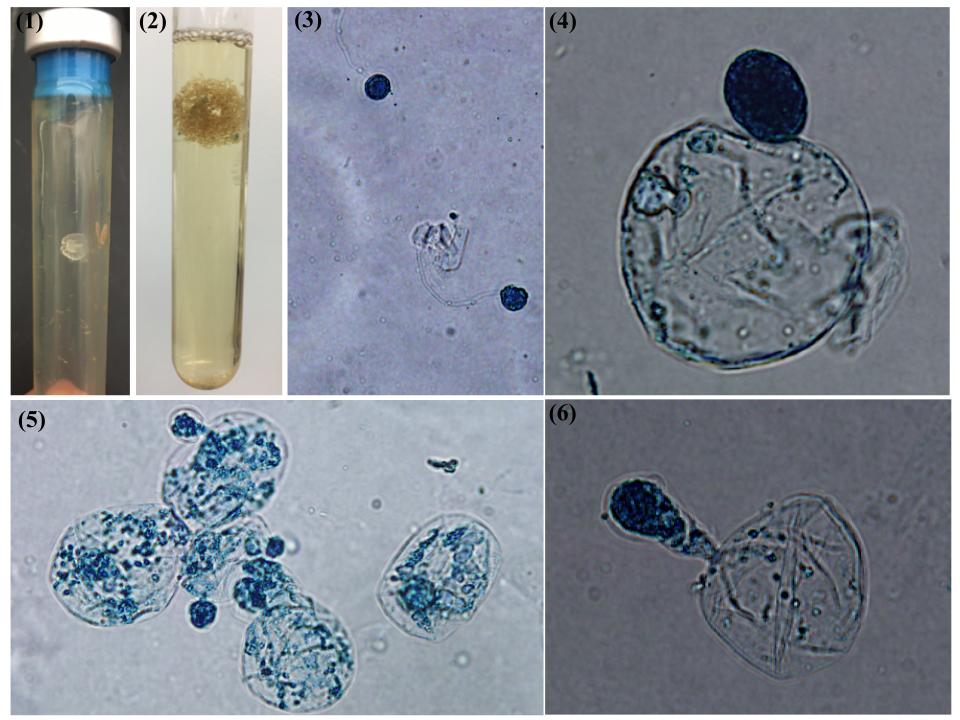Caecomyces, like Neocallimastix and Piromyces, was first described in the scientific literature by Liebetanz in 1910 as a flagellated protozoan, and was named Sphaeromonas. The true fungal identity of this genus was first reported in 1976 by Professor Orpin, and in the same paper Orpin also documented the first species of the genus, Sphaeromonas communis.
In 1988, the genus was formally classified as Caecomyces by Gold et al. The revised genus name indicated the fungal nature of the genus (-myces), whilst maintaining a distinction between it and Sphaeromyces (a hyphomycete genus). In the same paper, Gold et al also formally described a type species for the genus, Caecomyces equi (strain PN3). However, it was later proposed that C. equi and C. communis were actually the same species. Due to no type strain material remaining for C. equi (strain PN3; Gold et al., 1988) or C. communis (Orpin, 1976) it is unfortunately not possible to verify if this is indeed true (Wubah et al., 1991; Ho and Barr, 1995).
Caecomyces has monocentric thalli and produces monoflagellated zoospores. Caecomyces is unusual though in that it does not have a filamentous rhizoidal system. Instead, it has a bulbous rhizoidal system that has characteristic spherical holdfasts. To date, only one other genus has been described that has a non-filamentous rhizoidal system, Cyllamyces. Due to the above mentioned issues the type species it not 100% clear, although in the field Caecomyces communis is generally considered to be the type species.

Morphology
Images are shown above of a recently isolated Caecomyces communis, strain DS1.
On solid roll agar media, it produces granular colonies (Image 1). It exhibits thin and loose biofilm-like growth in cellobiose liquid medium (Image 2).
Microscopically, Caecomyces produces mainly monoflagellated zoospores (Image 3), Caecomyces displays a monocentric thalli with a bulbous rhizoidal system (Images 4-6). It produces both endogenous (Images 4-5) and exogenous (Image 6) sporangia.
Sequence Information
One sequenced genome is available for this genus, C. churrovis, which has now been published (Brown et al., 2021). For the latest update regarding publically available genomes for this genus, please see here.
For Caecomyces communis strain DS1 that is pictured above, the sequence information is available in the NCBI database (accession number MT085702: ITS1, 5.8S, ITS2 and D1/D2 LSU sequence data).
